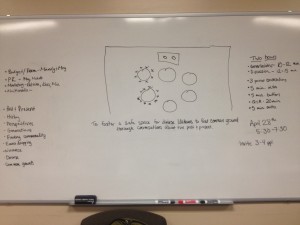I enjoyed reading this book, if only for the fact that I could get fired up, not only about the problems and possible solutions, but also King himself. The style and organization of the book are juxtaposed nicely against the complicated and face-palm inducing laws and jargon. For this post I have numerous coherent comments and thoughts that I will share, but I’ve also pulled out some of my favorite quotes and some random thoughts at the end.
I’m less upset that CRM and EIA consultants allow their reports to be dictated by their employers than I am about the fact that the Army Corps of Engineers, the Bureau of Land Management, Fish and Wildlife, etc, all of these government agencies who are tasked with impartial review have zero integrity. “So before BLM had even received a draft of the EA from the contractor—BNSF’s contractor, that is—who was preparing it, the Corps, BLM, and BNSF took it for granted that BLM was going to issue a FONSI—that is, find that the project would have no significant impact on the human environment….But what’s important here is that although neither the Corps nor BLM had carried out the assessment that was both legally and logically necessary to determine whether all these effects amounted to something significant, they already knew they were going to find them not so. In short, the fix was in. This is by no means uncommon. I’ve seen requests for proposals (RFPs) in which the agency seeking a contractor specified that the contractor would prepare an EA and FONSI, and I’ve very, very rarely seen a case in which an EA actually led to the decision to do an EIS. It does happen, but usually only with a lot of pressure from outside the agency.” (p. 57). On top of all of that King later states: “And most of the laws give federal agencies almost unfettered authority to interpret their responsibilities” (p. 65). WHAT!? This is disgraceful. I’m disappointed moreover because I feel this is the sort of crap that the public can use to argue for privatization, that big government is bad, and many other blanket statements that ignore the fact that a restructuring of the system would help rather than throwing the whole thing out or over to some massive corporation who then controls the process from start to finish.
I have some reservations about the wild horse issue. I do not know enough about the BLM’s management, but I do know that in some areas, the wild horses are actually destroying the countryside and dying of starvation at the same time. I get that King is using this as an example of the bigger picture that all parties involved are refusing to look at, but the way he presents it constrains the story and makes the BLM out to be the bad guys. Maybe they are the bad guys, but King has fallen into the same trap he criticizes, not taking the time to discuss all of the evidence.
With the case of the Fort Mojave Indian Tribe I am more than outraged. Have these archaeologists never heard of landscape archaeology? It’s an entire field of study on the prehistoric/historic use of land by groups of people including spiritual sites. You have one job, do it, and do it with integrity (i.e. in an undisturbed manner).
I like that he isn’t shooting for the protection of everything just because it’s part of the built or natural heritage. The time needs to be taken for a productive discussion of the benefits, consequences, and needs of individual cases. We should be able to have democratic deliberations in order to find the best balance or compromise. According to King, “that, regrettably, we can’t presently do.” (p. 16) “I’m not saying that all the people who come to me with their problems ought to prevail, but I’m enough of a populist to think that they ought to be heard, and negotiated with in good faith, and that they ought to have a level playing field on which to contend. They aren’t and they don’t, and in a democracy, that strikes me as a problem.” (p. 26). This seems to be his mantra. If we could only get all of the parties to sit down and have an actual conversation, without the jargon and the grandstanding and the fogging, we might actually make progress through a legitimate process of deliberation.
“The notion that these requirements serve an actual purpose—that it’s a good idea to think about what damage may result from something you’re thinking of doing, before doing it—has been quite lost.” (pg 7) – I feel like this is true for more than just natural or built heritage.
“perceive it to be a mere administrative nuisance” (67) – I’m terribly sorry you think caring for the environmental impacts of your actions are a nuisance, but future generations would really appreciate it if you would do your job.
So is a solution to the “analyst as a proponent” problem to de-privatize CRM and EIA?
Aren’t all government documents full of jargon and hard to comprehend? Ever tried to read a proposed bill or law or filed your taxes for that matter?
“There’s really no reason why not, except that the application of laws like NEPA and section 106 seems to cause people to shut down their faculties of common sense.” (78).
